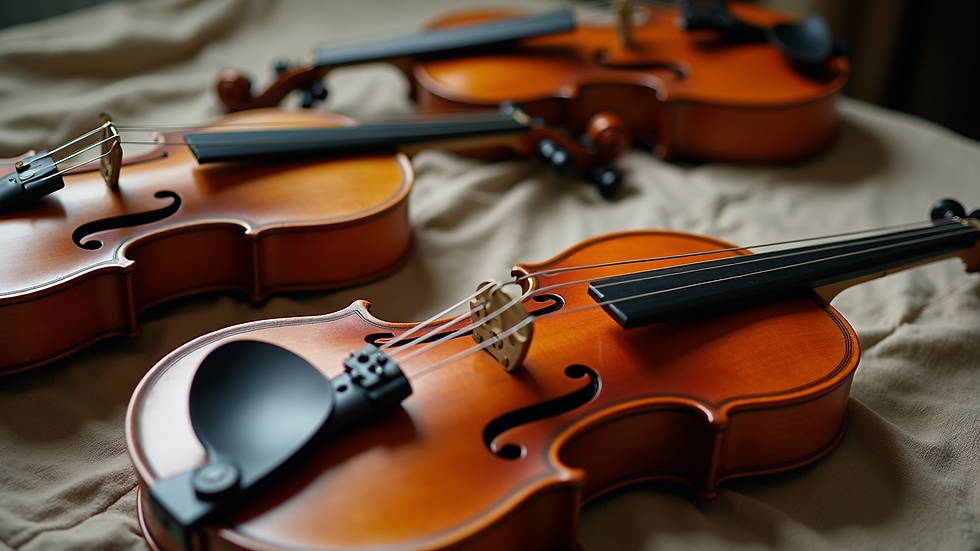How Music Shapes Cultural Narratives
- estheraustinglobal
- Jul 30
- 4 min read
Music is more than just sound; it is a powerful force that shapes cultural narratives across the globe. It reflects the values, struggles, and aspirations of societies, influencing how people see themselves and others. This article explores the profound ways music impacts culture, the components that make up music culture, and how these elements work together to tell stories that resonate through generations.
Understanding the Cultural Impacts of Music
Music has always been a mirror to society. It captures moments in history, expresses collective emotions, and fosters a sense of identity. The cultural impacts of music are evident in many ways:
Preserving Traditions: Folk songs and traditional music keep cultural heritage alive. For example, Celtic music in Ireland preserves ancient stories and customs.
Social Movements: Songs like Bob Dylan’s “Blowin’ in the Wind” became anthems for civil rights and anti-war movements, showing how music can inspire change.
Cross-Cultural Exchange: Music blends styles from different cultures, creating new genres like reggae, jazz, and hip-hop, which reflect diverse influences and shared human experiences.
Music also plays a role in shaping language, fashion, and even political views. It can unite people across divides or highlight social issues that need attention. Understanding these impacts helps us appreciate music as a vital part of cultural expression.

The Role of Music in Shaping Cultural Narratives
Cultural narratives are the stories a society tells about itself. Music is a key storyteller, providing a soundtrack to these narratives. It can:
Express Identity: Music often reflects the identity of a community or nation. For example, American blues music tells stories of hardship and resilience rooted in African American history.
Create Shared Experiences: Festivals, concerts, and communal singing bring people together, reinforcing cultural bonds.
Challenge Norms: Music can question societal norms and push boundaries. Punk rock, for instance, emerged as a rebellious voice against mainstream culture.
By shaping cultural narratives, music influences how history is remembered and how future generations understand their roots. It also helps people connect emotionally to their culture and to each other.

What are the 4 Components of a Music Culture?
To fully grasp how music shapes culture, it is important to understand the four main components of a music culture:
Music Style
This includes the genres, rhythms, melodies, and harmonies that define a culture’s sound. For example, Indian classical music is characterised by ragas and talas, which are unique melodic and rhythmic frameworks.
Performance Practices
How music is performed, including the instruments used, the setting (such as ceremonies or concerts), and the role of performers. In many African cultures, music is performed in communal settings with call-and-response singing.
Audience
The listeners and their relationship to the music. Audience participation can vary from passive listening to active dancing or singing along, influencing how music is experienced and valued.
Social Context
The cultural, historical, and social environment in which music exists. This includes the purposes music serves, such as religious rituals, entertainment, or political protest.
These components interact to create a rich tapestry that defines a music culture. Understanding them helps us see why music is so deeply embedded in cultural identity.

How Music and Culture Interact in Modern Society
In today’s globalised world, the interaction between music and culture is more dynamic than ever. The internet and digital media have made it easier for music to cross borders, influencing and blending cultures worldwide. This interaction has several effects:
Global Fusion: Artists combine elements from different musical traditions, creating new hybrid genres. For example, K-pop blends Korean culture with Western pop music.
Cultural Preservation and Innovation: While some traditional music faces the risk of fading away, others are revitalised through modern reinterpretations.
Economic Impact: Music industries contribute significantly to economies, promoting cultural tourism and creating jobs.
For individuals, engaging with diverse music cultures can broaden perspectives and foster empathy. For communities, it can strengthen cultural pride and promote intercultural dialogue.
To explore more about the relationship between music and culture, visit music and culture.
Practical Ways to Experience and Support Cultural Music
If you want to deepen your connection with cultural music and support its preservation, here are some actionable steps:
Attend Local Music Events
Festivals, concerts, and cultural celebrations offer authentic experiences and support artists.
Learn About Different Music Traditions
Explore music from various cultures through documentaries, books, and online platforms.
Support Independent and Traditional Artists
Purchase music directly from artists or through platforms that promote cultural heritage.
Participate in Music Workshops or Classes
Learning to play traditional instruments or sing folk songs can provide hands-on understanding.
Share and Discuss Music
Engage with friends and communities about the stories and meanings behind different music styles.
By actively participating, you help keep cultural narratives alive and contribute to a richer, more diverse musical landscape.
The Enduring Power of Music in Cultural Identity
Music continues to be a vital force in shaping cultural identity and narratives. It connects past and present, individual and community, local and global. Whether through ancient chants or modern beats, music tells the stories that define who we are.
As cultures evolve, music adapts and grows, reflecting new realities while honouring traditions. This ongoing dialogue between music and culture enriches our world and reminds us of our shared humanity.
Embracing the cultural impacts of music allows us to appreciate the depth and diversity of human expression. It encourages us to listen more closely, understand more deeply, and celebrate the stories that music so beautifully conveys.








Comments